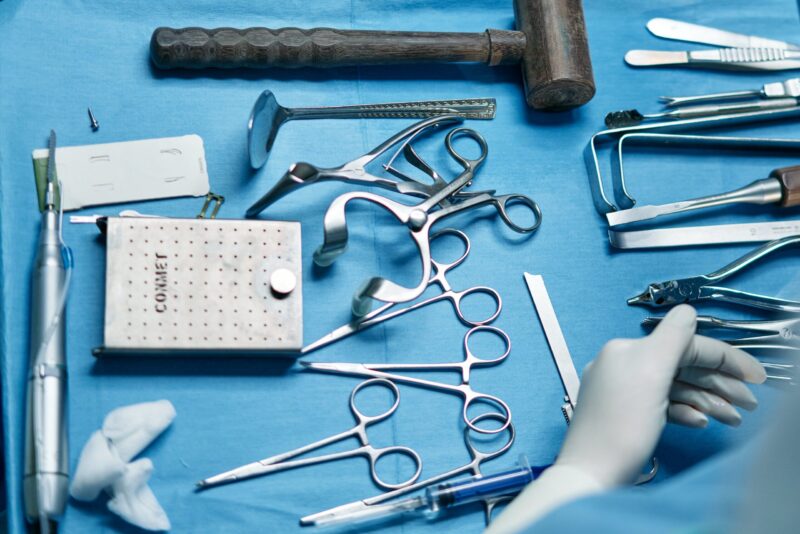As you embark on establishing a new hospital, one of the critical components that demand meticulous planning is the Surgical Unit Equipment. A well-equipped surgical unit is paramount for delivering quality healthcare services and ensuring positive patient outcomes. In this comprehensive guide, we will explore the essential equipment needed to furnish a state-of-the-art surgical unit, covering everything from surgical tables to sterilizing equipment.
1. Surgical Tables
Surgical tables are the cornerstone of any operating room, providing a stable and adjustable platform for surgical procedures. Ensure the table is adjustable to accommodate various surgical positions, including Trendelenburg and lateral tilt. Verify that the table can support the weight requirements for a diverse range of patients.
2. Clamps
Surgical clamps are essential tools for securing tissues and controlling bleeding during procedures.
Opt for clamps made of high-quality, sterilizable materials. To equip your staff with the best possible designs, choose a variety of clamps suitable for different surgical purposes. The different types of clamps include Hemostatic clamps, Bulldog clamps, and Allis clamps.
3. Surgical Exam Lights
Proper lighting is crucial for surgical precision and accuracy among the Surgical Unit Equipment. Surgical exam lights provide focused illumination in the operating room. For best surgical outcomes, ensure adjustable brightness to match the specific needs of different procedures. Further, opt for lights with flexible positioning to illuminate various areas of the surgical field.
4. Anesthesia Screens
Anesthesia screens, also known as anesthesia shields or guards, protect anesthesia providers from potential contaminants during surgical procedures. Choose screens made of transparent, easily cleanable materials. Opt for screens that are easily movable for flexible use. Screens come in different types, which include adjustable and foldable screens, and screens with in-built storage.
5. Restraint Straps
Restraint straps are crucial for patient safety during surgery, preventing unintended movement on the operating table. To enhance safety and better functionality, ensure the straps are made of durable, easy-to-clean materials. Further, choose straps with adjustable lengths to accommodate various body sizes. Types include body straps, limb straps, and chest straps.
6. Equipment Covers
Equipment covers protect surgical instruments and devices from contamination and facilitate a sterile environment in the operating room. Ensure that the covers can withstand standard sterilization procedures. Choose covers with a high barrier effectiveness against microbes. Types of covers include instrument tray covers, mayo stand covers, and microscope covers.
7. Scrub Sinks
Scrub sinks are designed for thorough hand hygiene, a crucial aspect of infection control in surgical units.
Opt for sinks with foot or knee controls to minimize hand contact. Choose sinks made of non-corrosive and easily cleanable materials.
8. Sterilizing Equipment
Sterilizing equipment is essential for maintaining a sterile environment in the surgical unit, ensuring the safety of both patients and healthcare professionals. Choose equipment compatible with the preferred sterilization methods, such as autoclaving or ethylene oxide gas. Select sterilizers with sufficient capacity to handle the volume of surgical instruments in the unit. Types of sterilizing equipment include autoclaves, ethylene oxide gas sterilizers, and ultrasonic cleaners.
9. Patient Transfer Equipment
Patient transfer equipment facilitates the safe and efficient movement of patients to and from the operating room. Choose transfer equipment with smooth-rolling wheels for easy maneuverability. Also, opt for adjustable features to accommodate patients of different sizes. The varieties include operating room stretchers, surgical wheelchairs, and patient transport trolleys.
10. Armboards
Armboards provide support for patients’ arms during surgery, ensuring proper positioning and preventing discomfort. Types of arm boards include radiolucent arm boards for imaging, and articulating armboards for versatile positioning. For maximum effectiveness, choose boards with comfortable padding to prevent pressure sores. Select armboards that can be easily adjusted to different angles.
Conclusion
Equipping a surgical unit for your new hospital is a multifaceted endeavor that requires careful consideration of each piece of equipment’s functionality, durability, and compatibility with healthcare standards. Investing in high-quality surgical equipment not only ensures the safety of patients and healthcare professionals but also contributes to the efficiency and success of surgical procedures. By prioritizing the selection of reputable brands and adhering to industry best practices, you can create a surgical unit that meets the highest standards of healthcare excellence in your new hospital.


Write a comment
Your email address will not be published. All fields are required